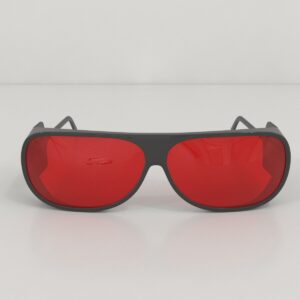$490.00

RWD is a global leader in the design and manufacturing of advanced research and laboratory equipment. Specializing in high-precision instruments for neuroscience, behavioral science, and pharmacology.



Isoflurane: (Forane, 1-chloro-2,2,2-trifluoroethyldifluoromethyl ether) Halogenated ether is clear, colorless, volatile liquid at standard temperature and pressure. It has a mild, ether-like odor and a molecular weight of 184.5. 100ml bottle.
Not for sale in the USA. Please inquire about the availability
| Formula | C3H2ClF5O |
| Molecular Weight | 184.5 g/mol |
| Density | 1.496 g/mL (at 25°C) |
| Boiling Point | 48.5°C |
| Vapor Pressure | 238 mmHg (31.7 kPa) (at 20 °C)295 mmHg (39.3 kPa) (at 25 °C) 367 mmHg (48.9 kPa) (at 30 °C) 450 mmHg (60.0 kPa) (at 35 °C) |
| MAC | 1.15 vol % |
| Other Properties | Colorless Liquid Non-flammable Slight odor |
| Blood: Gas Partition Coefficient | 1.4 |
Isoflurane is among the many anesthetic agents discovered by Ross C. Terrell in 1965. It was approved for medical use in the United States in 1979. Isoflurane, along with sevoflurane, is a widely used halogenated ether used as an anesthetic agent. Isoflurane is a clear, colorless stable liquid with a mildly pungent, musty odor. Isoflurane has the advantage of favorable blood gas distribution, low blood solubility, and rapid and smooth recovery.
Isoflurane alters tissue excitability by decreasing the extent of gap junction-mediated cell-cell coupling and altering channel activity; This results in the induction of muscle relaxation and reduction of pain sensitivity. Isoflurane allows rapid induction and recovery from anesthesia. Despite its mild pungent smell, isoflurane does not stimulate tracheobronchial secretions and excessive salivation. The anesthetic agent is a profound respiratory depressant.
Isoflurane decreases blood pressure in a dose-dependent manner. Anesthetization with isoflurane maintains a stable heart rhythm. Cardiac output is maintained, under controlled ventilation and normal PaCO2, compensating for stroke reduction. Isoflurane, in certain animals, can produce coronary vasodilation at the arteriolar level.
Isoflurane has a dose-dependent effect on central nervous system depression. The agent does produce convulsive activity. Isoflurane does not prevent cerebral edema or an increase in intracranial pressure following traumatic brain injury. Further, the need for muscle relaxants decreases at increased concentrations of isoflurane.
Isoflurane has a blood gas coefficient of 1.4 which is less than other potent inhaled anesthetics. The rapid rise in alveolar concentration towards inspired concentration can be observed with isoflurane due to its low blood solubility. The mild pungency of the agent can provoke breath-holding or coughing which can affect the rate at which inspired concentration can be increased. However, this effect can be minimized by premedication or nitrous oxide or by using an intravenous agent for induction.
Isoflurane’s low solubility enhances its elimination. The duration of the anesthesia affects the rate of recovery. The rapid elimination allows quick reversal of circulatory, respiratory and neuromuscular depression.
Advantages
Disadvantages
Burns WB, Eger EI 2nd (2011). Ross C. Terrell, PhD, an anesthetic pioneer. Anesth Analg. 113(2):387-9. doi: 10.1213/ANE.0b013e3182222b8a.
Eger EI 2nd (1981). Isoflurane: a review. Anesthesiology. 55(5):559-76.
Eger EI 2nd (1984). The pharmacology of isoflurane. Br J Anaesth. 56 Suppl 1:71S-99S.
| Brand | RWD |
|---|---|
| Title | Default Title |
You must be logged in to post a review.
There are no questions yet. Be the first to ask a question about this product.
Monday – Friday
9 AM – 5 PM EST
DISCLAIMER: ConductScience and affiliate products are NOT designed for human consumption, testing, or clinical utilization. They are designed for pre-clinical utilization only. Customers purchasing apparatus for the purposes of scientific research or veterinary care affirm adherence to applicable regulatory bodies for the country in which their research or care is conducted.
Reviews
There are no reviews yet.